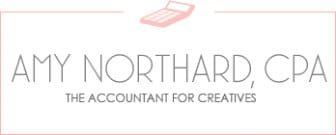A chart of accounts can give you a clear picture of where your money is going, and will provide you with the necessary information to make informed business decisions in the future.
Does a photographer need a chart of accounts?
Yes, the information in a chart of accounts is used to fill out small business tax forms like the Schedule C. A Schedule C (Form 1040) is used to report income or (loss) from a business you operated or a profession you practiced as a sole proprietor.
What is a Chart of Accounts?
Think of a chart of accounts as a filing system for categorizing all of a company’s financial accounts and classifying all transactions according to the accounts they affect. The chart of accounts is a listing of all accounts used in the general ledger of an company. The chart of accounts is used by the accounting software (Quickbooks, FreshBooks, Xero, Wave, etc.) to create your business’s financial statements. A chart of accounts is usually divided into five categories: assets, liabilities, equity, income, and expenses.
How should a photographer organize a chart of accounts?
Keep your chart of accounts as simple as possible, and only include information you actually need. This is the general template to follow when creating and numbering your accounts (numbering is optional):
- Assets – Asset accounts should include anything you own that has value, like a building, land, equipment, vehicles, and inventory.
- 1010 Checking
- 1020 Savings
- 1030 PayPal
- 1040 Accounts Receivable
- 1050 Inventory
- 1060 Property
- 1070 Equipment
- Liabilities – Liabilities should include things like loans, mortgages, payroll taxes due, and any bills that haven’t been paid.
- 2010 Accounts Payable
- 2020 Sales Tax Payable
- 2030 Payroll Tax Payable
- 2040 Mortgage Loan
- 2050 Other Loans
- Equity – (Total equals Assets minus Liabilities)
- 3010 Owner’s Contributions
- 3020 Retained Earnings
- Income
- 4010 Sales From Products (albums, prints, etc)
- 4020 Sales From Services
- 4030 Affiliate Income
- COGs
- 5010 Materials and Supplies (cost of albums, prints, etc)
- 5020 Labor Costs (directly related to sales made)
- Expenses
- 6010 Advertising
- 6020 Travel Expenses
- 6030 Contract Labor (indirect, benefits the whole business, not just one sale)
- 6040 Office Supplies
- 6050 Studio Rent
- 6060 Gear/Equipment Rentals
- 6070 Meals and Entertainment
- 6080 Wages paid to employees
- 6090 Dues and Subscriptions
- 6100 Education
- 6110 Props & Backdrops
A properly structured and updated chart of accounts will allow you to understand the financial health of your company at a glance. It’s important to consistently track these numbers to ensure that your company is moving in the right direction.

